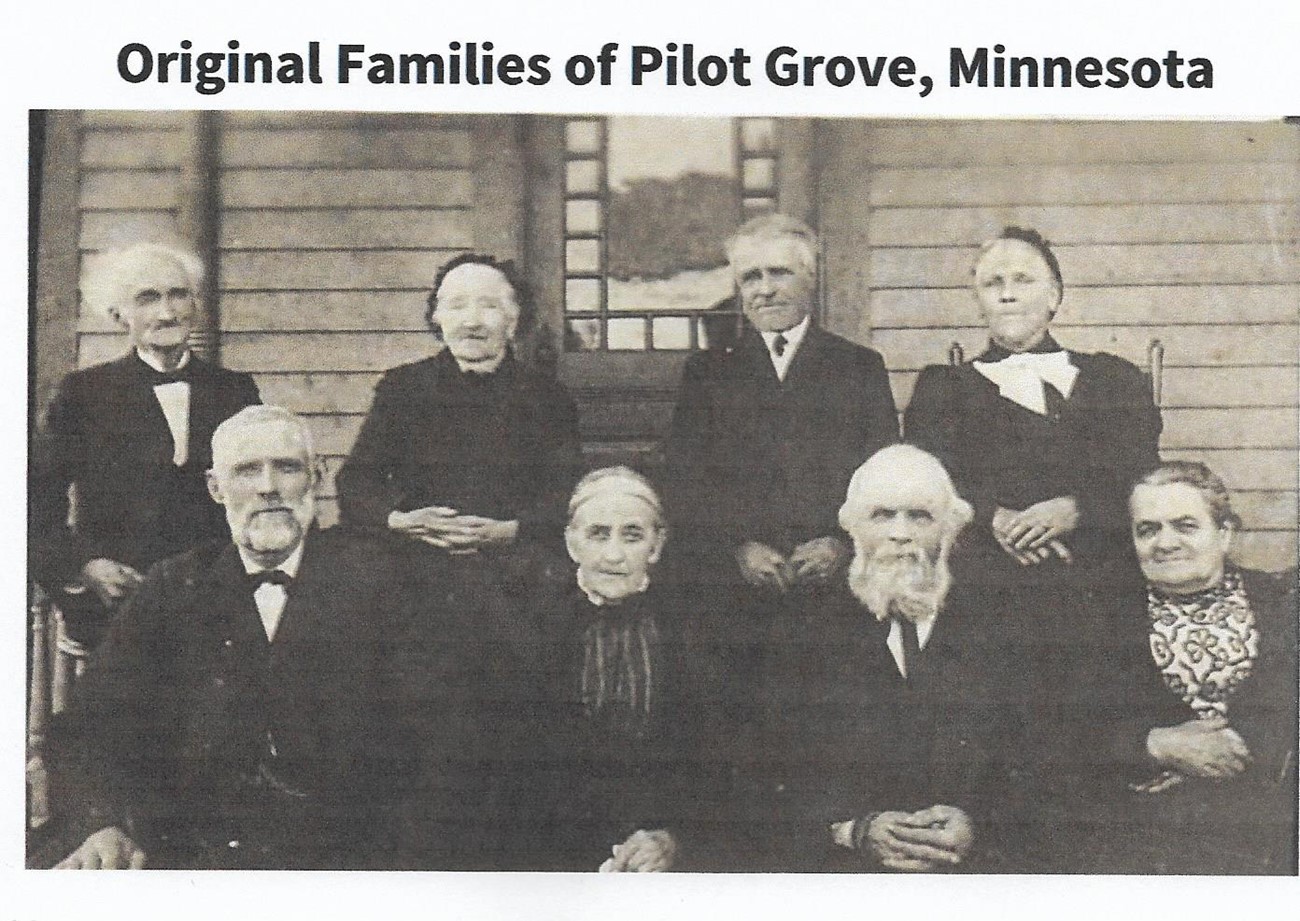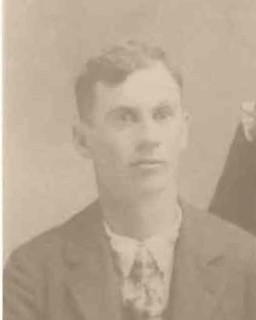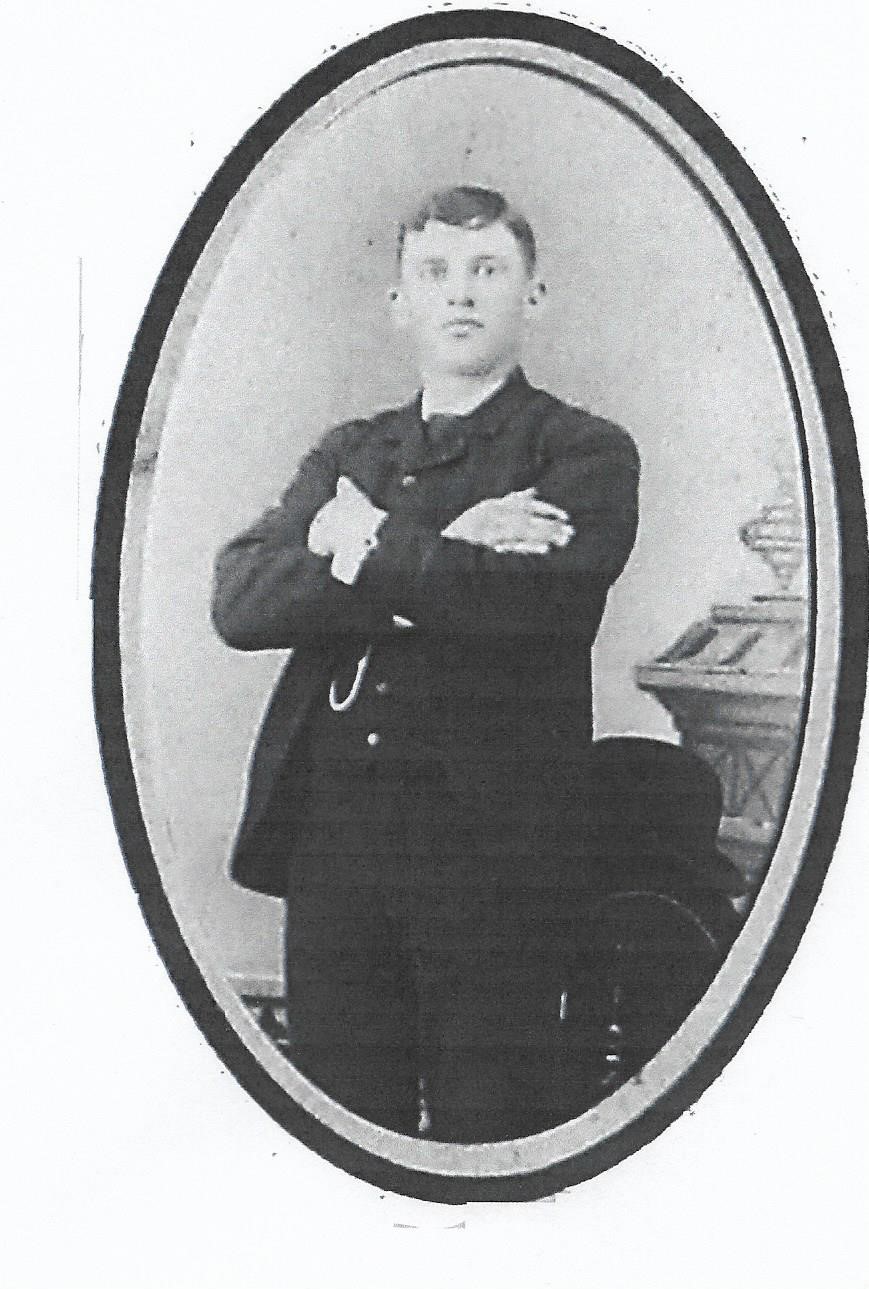Click on any person's box
to navigate to their page
ROBERT THOMAS MORE (1839-1928)
The following notations underneath a person's name and picture indicate that more information is known about their: *P*arent(s), *S*pouse(s) and *K*id(s) | Robert Thomas More 
| ||||||||||
| PARENT(s) | SPOUSE(s) | KID(s) | |||||||||
| Andrew Robert More (1813-1902) *P* *S* | (married Jan 27, 1866) Elizabeth (Libbie) Churchill (Rendall) More (1846-1927) *P* *S* *K* | Andrew Russell More (1866-1912) *P* *S* | ||||||||
Jeanette Allen (Weir) More (1816-1903) *S* *K* | Charles Rendall (Dick) More (1868-1957) *P* *S* | ||||||||||
George Robert More (1874-1957)*P* *S* | |||||||||||
Elwin Delbert More (1879-1954)*P* *S* | |||||||||||
Clarence Wilbur More (1886-1957)*P* *S* | |||||||||||
Robert Thomas More was the oldest child and oldest son born to Andrew Robert More and Jeanette Allan Weir. *He was the great great grandfather to the author. He was born on July 7, 1839 near Hamilton, Lanarkshire County, Scotland. He was located on the first Scotland Census taken in 1841 at age 2 living on John Street with his parents and younger sister, Jeanette, age 4 months. When he was ten years old, he came to America with his parents and four siblings on the ship "Liberty" arriving to New York city on July 13, 1850. They traveled to Waukesha County, Wisconsin and lived there for three years before moving to Palmyra, Jefferson County, Wisconsin for the next five years. When he was 19 years old, he and his parents and siblings left Wisconsin for a new beginning in Minnesota - where their family were some of the original settlers in Pilot Grove Township in Faribault County. On the 1860 Federal Census, he was age 20 and working as farm labor on his father's farm in Pilot Grove Township. He was said to have worked mostly on farm work in the summer and mostly either hunted or trapped the rest of the year. At that time, many of his peers viewed him as an expert trapper and hunter. During the Civil War and Indian Wars in Minnesota, he enlisted on February 6, 1865 and was part of Company F Heavy Artillery. He was a Private and was discharged on September 27, 1865. The next year, at age 26, he married Elizabeth Churchill Rendall (1846 - 1927) on January 27, 1866 in Faribault County, Minnesota. She was one of 12 children of Charles Rendall and Elizabeth Churchill. Her father was an English immigrant and a tailor by trade. He had arrived on the ship "Alesto" in 1841 and they had lived in Waukesha County, Wisconsin at the same time as the More family. They eventually moved to Lura Township in Faribault County near Delavan, Minnesota. Their first ten years of marriage, they lived in a log house. When first married, Robert secured 160 acres through the Homestead Act of 1862. On the 1870 Federal Census, Robert and his wife were living in Pilot Grove Township with two of their children (Andrew 3 and Charles 1), where Robert was a farmer. They were living next door to his father - as well as his sister, Christina, and her husband and family, On the 1870 non-census schedule, he had 190 acres, 3 horses, 3 milk cows, 2 working oxen, 3 other cattle and 3 swine. He was raising wheat, Indian corn, and oats. On the 1880 Federal Census, he was still a farmer in Pilot Grove Township. With him in the household were his wife and four children (Andrew 15, Charles 11, George R 6, and Elwin 9 months). He was active in local politics and served as Township assessor and treasurer. In 1886, he was elected as County Commissioner and the current courthouse in Blue Earth was built when he was in office. He was a solid Republican in his political party of choice. On the 1900 Federal Census, he was age 60 and still a farmer. In the household were his wife and two of their sons (George R 26 and Clarence W 13). During this time period and for several years, Robert and his youngest brother, Edward, were partners in the livestock business. They bought and sold cattle and hogs. Annually they were said to have fed 125 head of steers and 100 head of hogs (this was very large for that era). They farmed 1300 acres of land (mostly corn), and that acreage was very substantial for the time. His father died in 1902 and his mother died the following year. By the 1910 Federal Census, Robert had moved to the city of Blue Earth in Faribault County, Minnesota. He was age 70 and listed as a retired farmer. With him in the household was his wife. Additionally, this census lists a Victoria More 15, who is said to be a daughter. The author is quite certain that this is inaccurate as she is found nowhere else on any records and must have been a recording error at the time. If she was a servant or a relative that was living with them, we do not know. On the 1920 Federal Census, Robert was age 80 and living in the city of Blue Earth on East 9th Street. Only his wife, Elizabeth, was living with him at that time. He was said to be President of the local bank (Farmer's National Bank). Robert's wife, Elizabeth died on October 18, 1927 at age 81 and was buried in Blue Earth in the Riverside Cemetery there. Robert Thomas More died the next year at age 89 on August 23, 1928, and was buried in Riverside Cemetery next to his wife. The article below is from http://genealogytrails.com/minn/faribault/bios_m.htm Robert More Source: Memorial Record of the Counties of Faribault, Martin, Watonwan and Jackson, Minnesota, Illustrated; Lewis Publishing Company, Chicago (1895) transcribed by Liz Dellinger Robert More, County Commissioner of Faribault county, Minnesota, is one of the leading farmers and stockmen of the county, his residence being in Pilot Grove township. Mr. More was born July 7, 1839, in Hamilton, Scotland, which was the birthplace of the Mores for many generations, he being the eldest of seven children of Andrew R. and Janette (Weir) More. When he was eleven years of age his parents emigrated with their family to America, settling first in Waukesha county, Wisconsin, and later in Jefferson county, that State. In 1857 they came to Minnesota and took up their abode on a farm in Pilot Grove township, Faribault county, this region of country then being an unbroken prairie and abounding in game. For sixteen winters our subject was engaged in hunting and trapping, a sport in which he took great delight and which afforded him not only pleasure but also profit, the pelts bringing high prices. In all this part of the country he was noted as an expert hunter and trapper, and, while he was unoccupied in this way during the winters, he spent his summers in farm work. He early began to buy and raise cattle for market and in this business has been more or less extensively engaged ever since, his operations extending over a wide territory. For several years past he and his brother Edward have been in partnership in the stock business, buying and selling both cattle and hogs. They annually feed for market about 125 head of steers and no less than 100 hogs, and they farm about 1,300 acres of land, raising large crops of corn, which they feed to their stock. They ship to the Chicago market. After his marriage, which occurred in 1886, Robert More settled on 160 acres of land, the farm he still occupies. For ten years he lived in a log house, he and his wife bearing the hardships incident to life on the frontier. Fortune smiled upon their honest and earnest efforts as the years rolled by, and today Mr. More is recognized as one of the substantial, progressive men of Faribault county. He was married January 27, 1866, to Elizabeth C. Rendall, daughter of Charles and Ann (Aspey) Rendall, natives of England. Upon their emigration to this country, her parents settled at Gravesend, Kings county, New York, where her birth occurred. After a residence of nine years in New York, they came west to Milwaukee, Wisconsin, and in 1864 came from there to Minnesota, settling in Lura township, Faribault county, where they still reside. Mr. and Mrs. More have five children, namely: Andrew R. , Jr., a farmer of Pilot Grove township; Charles K., engaged in farming operations with his father; George K. , attending commercial school at Des Moines, Iowa; Elwin D., and Clarence, at school. Always a public-spirited man, Mr. More has served his township long and well in various capacities, acting as Township Assessor and later as Township Treasurer, filling both offices a number of years. Yielding to the urgent request of his many friends, he in 1886 allowed his name to be used as a candidate for County Commissioner, and was duly elected to that office by the Republican party, with which he has always affiliated, and since 1886 has been serving efficiently as Commissioner. The magnificent county courthouse has been erected during his term of office, and for the deep interest he took in the matter he is deserving of thanks from the people. More might be said of the life of this worthy citizen, but enough has been given to serve as an index to his character, and place him, where he belongs, among the representative men of his day and place.
|
Record last updated on 05/15/2025
♦ Some content from findagrave.com, littlechutehistory.org, davidkeetch.com, myheritage.com and familysearch.org ♦